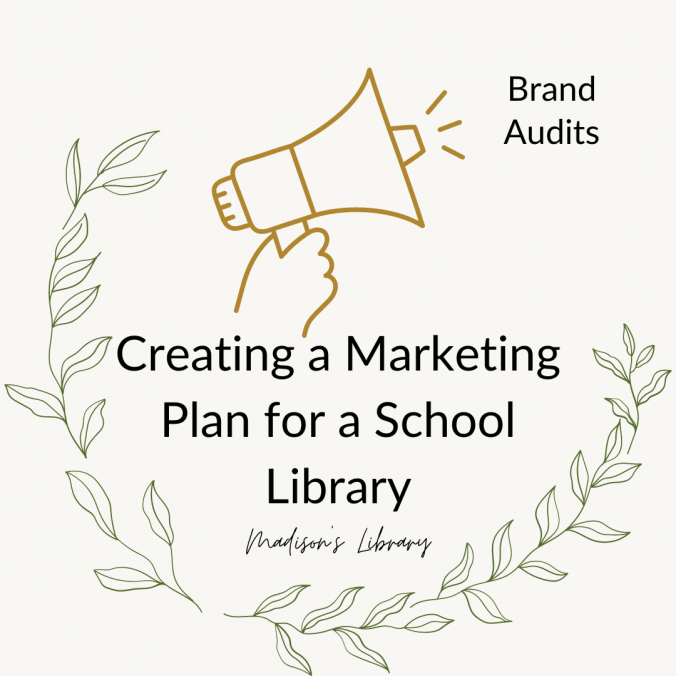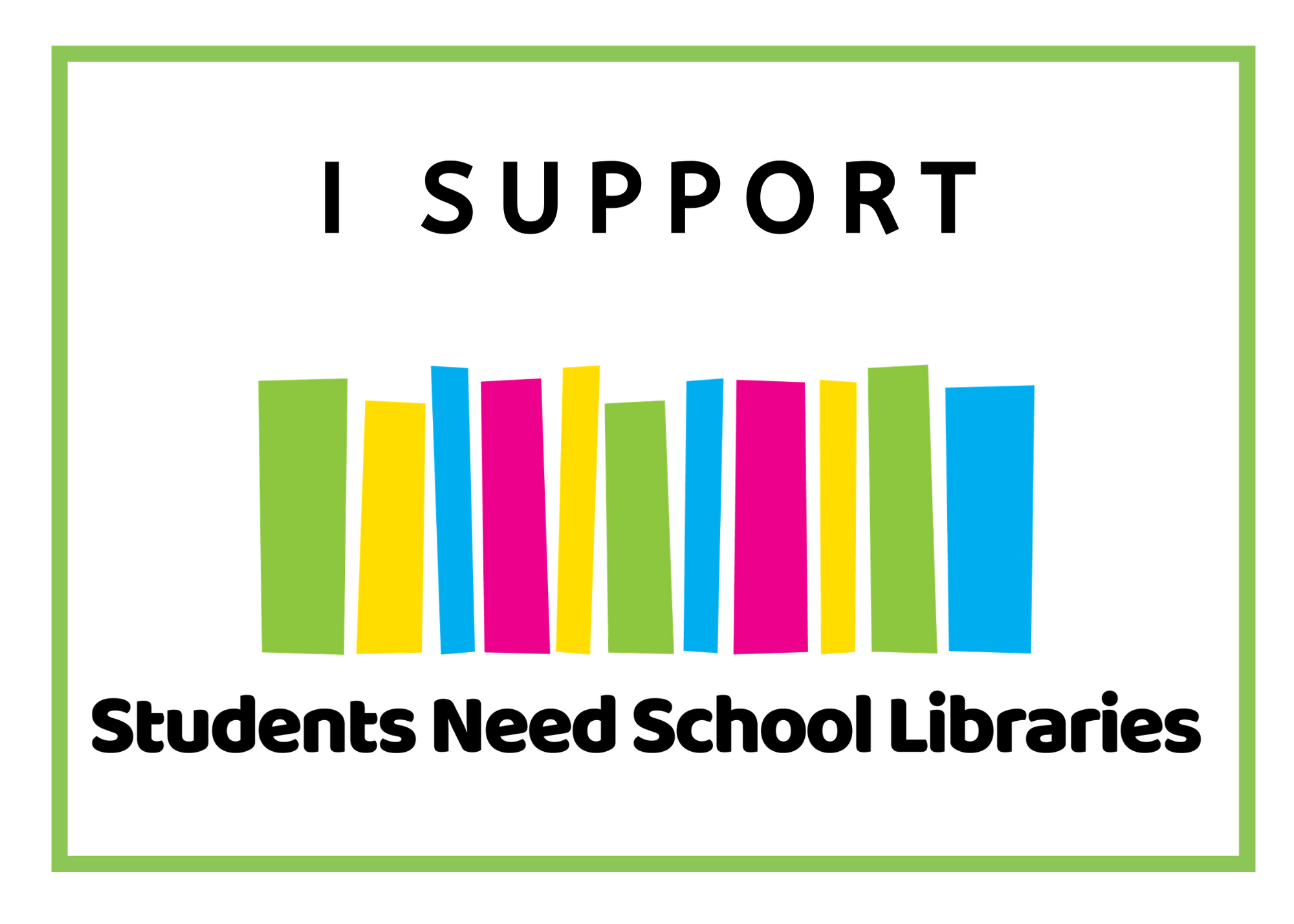Creating a Library Marketing Plan 3 – Brand Audit
Marketing and branding can be such a powerful thing for our libraries. If you want to follow along with this post series as I explore creating a library marketing plan, check out all the posts here.
When I started to investigate creating a library marketing plan for our school library, I drew upon my marketing and branding knowledge from the business sector and started researching the topic. You’ll find some links to great articles, podcasts and further reading in my second post in this series.
Once we decided to investigate and update our school library’s brand, the first step was to conduct a brand audit. Every library has a brand, regardless of whether it has been carefully crafted or unconsciously created by the decisions that have been made. If we wanted to direct the future of our library, I needed to discover what our brand was and then decide what it’s future should be.
Conducting a brand audit is a really powerful check in about what people think about your school library, your messaging and your impact. It involves asking questions and taking a deep look at what your library’s values and points of difference are. It’s a great way to update your strategic plan and change your library’s direction. Because a brand is a lot more than a logo and a colour scheme. Your brand is everything that stands behind your library. Think about the brands in the business world that you know. You might know their name and logo, but powerful brands also share their purpose, values and mission in everything they do. You can understand a lot about their ethics and what they stand for, their commitment to quality or customer service. Constructing your school library’s brand is the same. It should reflect your purpose, values, mission and goals. Having a strong library brand is also really powerful for advocating for your school library, your library team and what you do. If people know about your school library and what you do, the full picture, it’s easier for them to value your school library.
Ask yourself, can your audience understand your school library – who you are and what you do – in seconds? Do they gravitate to and take action from your messages?
The first step is to discover what you already have in place. Below, I’ve listed the steps I took to understand a full audit. It took me a few months and we are still working on it. Do this as a team – having a shared understanding is powerful.
Competitor Audit
Investigate 4 school library brands. These are school libraries that the Library Team admire or have mentioned. For each of them answer the below:
- Name of school library and link to website or social media
- What is the library’s focus?
- What’s unique?
- Key strength
- Weaknesses
- Overall feeling
- Visible branding – Fonts and colours
Market Mapping
Create an x, y axis. On one end of each put two values that appeared consistently in the above exploration. I used low to high innovation on the x axis and reading to research focus on the y axis, but do what works for you. Place your identified four school libraries on that grid. Now, where do you want to be? Add that to your grid.
Values
Who Are We and what do we do?
Activity to do with Library Team
- Write down every adjective you can think of to describe the library, what you do and what your goal is. Good and bad. Post it notes or large posters.
- Circle the words that resonate.
- Now in a new colour, write in what your goal words would be.
Activity to do with a select group of leaders, students and staff members from the school, in one-on-one meetings.
- What is one or two words that describe the library?
- List some of the things the library does.
- What library resources or services do you use?
- What challenges do we solve?
- What value does the library bring to the school?
- What would you like to see from the library in the future?
Combine the data from both activities. Look over the lists and results. As a team, categories the list. If similar terms and words appear, group them. Refine the list. Circle those that resonate. create a list of words or statements you need to move away from. Continue to narrow it down until you have 3-5 words. These are your values. You should also consider the school’s strategic plans, vision, mission and values. Where is the overlap?
The Current Situation
Gather your current strategic plan, vision statement, social media plans, screenshots or photos of your website, logo, homepage, social media, name, catalogue, annual report, recent posters, recent displays, newsletter, photos of library entrance, library space, and circulation desk, end panels, recent internal and external emails, school notices or any other touchpoints and messaging. Lay them all out on a table. What are some of the words and feelings that spring to mind? Look at the colours, fonts and images used. Look for consistency or inconsistency. What does that say? What is the message? Are your 3-5 values listed? Does it reflect what you want?
More data
There is some more data you can gather. Loan stats, door counts for a set period, website visits, stats from specific marketing outreach (did you email about an event and only get 5 people respond vs 10 respondents on social media?).
Does it align
Look over all the data you’ve gathered so far, your interview results and analysis of your messaging. Does it align? Does your vision align? Does your data support your success or suggest the need for change?
Creating a new vision statement
A vision will make you move and not remain static. A vision will represent your big idea, what you will aim for. It’s your motivation.
As a team, answer the following questions
- In the next 5-10 years what do you want to accomplish?
- List school libraries or librarians who have inspired you. Traits, characteristics, qualities
- How can you improve the school, community?
- How do you want people to describe you in 10-20 years from today.
A vision is about becoming the ideal version of your library and accomplishing your goals. Make it unique, capture your library’s personality, make it fun, share it with leadership and stakeholders. Don’t hide it away.
Draft up your vision statement from the above. Keep it short and sharp but specific.
Mission statement
If the vision is your future, the mission is your present and all about how you get to that future.
List your library’s main roles (e.g. literature and reading promotion and specialists).
List your main products and services.
List those that you serve, your audience.
What makes you unique?
What benefits do people get from your service?
Put these together to create a short, sharp statement. This is your mission. If struggling, use the format: present action that describes what you do to whom to what benefit.
Purpose
What is your core purpose? This is internally facing, while the vision and mission is external. Having a purpose gives your brand authenticity.
List seven reasons why your school library does what it does. How do these make you feel and reflect on your school library? Narrow down your list to your core purpose statement.
Audience Mapping
How do you reach the right people in the right way? Think about some of the typical people you serve. Creating an audience persona for each, helps you to target your messaging and outreach. For each persona, list
- demographics: age, gender, where do they live,
- psychographics: beliefs, cares, how do they spend their free time, what subscriptions do they have.
- engagement: what are their top three problems
Brand behaviour
How does your library’s brand behave?
Start with I or we statements. We believe in… We will always…
Some prompts to help:
- What are two or three key characterises or points of different for your library?
- What are two or three ways in which you operate that make you unique or stand out?
- What are two or three purposes or social impact goals that you care about?
Again, these statements are internal facing for your library team and help you determine how you act, post, share and construct your messaging. For example, if one of your statements is about always being a welcoming and safe place, that will govern everything from how you welcome students as they come in, signage and rules in the library.
Visual branding
Now you can decide on the visual elements of your brand. Create a mood board with colours, fonts and images that fit your values, vision and purpose. Consider colour theory, different font styles, your current space and the colours and fonts dictated by your space and by your school’s branding guidelines. Get some images that speak to your values, mission and vision. If you want a logo, consider if you want one that is just type or a workmark, one that is a symbol or icon or one that combines the two. Your logo is just a representation of your brand, not the brand itself. Your logo should be impactful, unique, timeless and clear.
Guidelines
Once you have decided on all the above, create a document that outlines it all and provides an easy guide for anyone putting together any outreach. Creating a poster, where do you get the logo, colours and font? Put this all in your guidelines. Update your strategic plan. You might like to create a library handbook that brings together your strategic plan and brand guidelines. After all, it all works together.
And there it is, a step-by-step brand audit. Of course, this is just a summary of each step. There are plenty of resources that detail each step and why you should undertake it and there are books that offer a more detailed guide.



Leave a Reply